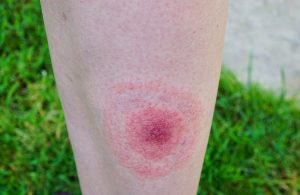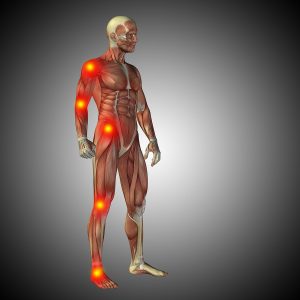Traditional treatment for osteoarthritis is not very successful, but stem cell therapy is a new way to treat osteoarthritis.
Traditional treatment of osteoarthritis
Osteoarthritis is a common degenerative type of arthritis. Wear and tear are diminishing the hyaline cartilage that coats joint bones. The lubrication of synovial fluid is diminishing as well. The end result is that the patient suffers pain from bone rubbing on bone in affected joints with swelling of the synovial membranes. The physician usually prescribes diclofenac topical solution for the affected joints and also gives anti-inflammatory drugs by mouth (diclofenac or ibuprofen). Unfortunately, the patient may develop side effects of the anti-inflammatory medication, such as kidney damage and gastritis. The end result after years of suffering is that the joints turn stiff and the joint pain becomes unbearable.
Joint replacement surgery
This is when the doctor refers the patient to an orthopedic surgeon, and an artificial hip or a knee joint replacement is the next suggestion. These surgical procedures are not without dangers. Postsurgically blood clots can develop and cause pulmonary emboli. Infection and sepsis can also develop. Often the surgery does not solve all of the problems and leaves the patient with a permanent limp.
Stem cell therapy to treat osteoarthritis
Regenerative medicine has developed an alternative to the conventional treatment of osteoarthritis. I described this new approach to osteoarthritis before here.
Stem cells are harvested from fatty tissue of the patient and injected into the affected joint. Stem cell stimulators like platelet rich plasma and low-dose laser therapy activate the stem cells that were lying dormant in the fatty tissue. These type of stem cells are mesenchymal in origin, so they go by the name of mesenchymal stem cells. When injected into a joint with osteoarthritis they can transform into any tissue that is needed to repair the damage of the joint. A defect of the hyaline cartilage is covered by stem cells transforming into cartilage cells and fixing the hyaline cartilage defect.
What stem cells do
Stem cells fix any meniscal degeneration in the knee joint by mending what is degenerated. They can form new tissue that over-bridged mini tears in the meniscus. If the synovial membranes that produce joint lubrication are damaged, the stem cells rejuvenate the old tissue and joint lubrication normalizes. The end result following stem cell treatment is that the osteoarthritic joint becomes regenerated with normal function. Stem cell treatment normalizes the osteoarthritic process in the joint, and down the road no joint replacements are necessary. This is a huge advantage in comparison to the conventional treatment of osteoarthritis.
My own experience with stem cell therapy for osteoarthritis of my left knee
I have experienced mild left knee arthritis for 5 years. It was not severe enough to treat with anti-inflammatory pills. I used higher amounts of fish oil capsules, which helped somewhat. I heard that Dr. Michael Weber from Lauenförde, Germany treats osteoarthritis with stem cell therapy.
He had treated my back successfully on several occasions in the past. I had previous stem cell treatment 4 years earlier as summarized here. Part of this was stem cell therapy for my left knee. During the Covid time I could not go to the gym for a period of time. Instead, I went for long walks on a nature trail that was bumpy and had many roots. This flared up my previous problem with my left knee. But in early June 2022 I made my way back to Dr. Weber’s clinic for more stem cell therapy.
The following summarizes how he treated my left knee with stem cells.
Liposuction to harvest stem cells for treatment
The doctor used a local anesthetic to freeze the skin and subcutaneous tissue on the right flank. Subsequently a solution of normal saline that contained adrenaline and bicarbonate was injected. This allowed Dr. Weber to withdraw fatty tissue easier 20 minutes after the normal saline injection. The generous portion of fatty tissue harvested was brought to a cell separator, which separated stem cells, fat cells and connective tissue. The stem cells were counted by a technician. They were found to be 100% viable and there was a total of 980 million stem cells.
Intravenous stem cells
Dr. Weber administered one portion of the total stem cell harvest intravenously. I was told that this ensured that stem cells would be delivered to tissues that needed renewal through stem cell therapy. There are several methods to stimulate stem cells. One of these methods is to give oxygen intravenously with a device with the name Oxyven (from Swiss Medica) . This procedure took 20 minutes. A second method to stimulate stem cells is with low-dose laser therapy. Dr. Weber used intravenous red, green, blue and yellow lasers, for 20 minutes each.
The laboratory kept the rest of the stem cells overnight at room temperature. Dr. Weber told me that it would have been a mistake to keep the stem cells in the refrigerator overnight as the cold temperature kills all of the stem cells!
Targeted stem cell therapy
The following day I received treatments with my stem cells harvested the day before. The doctor drew blood up first, which underwent centrifugation. The interface between the red blood cell portion and the plasma contains PRP (platelet rich plasma). Dr. Weber mixed PRP in with the stem cells. PRP is a powerful stimulator of stem cells.
Dr. Weber inserted a needle into my left knee and injected stem cells (and PRP) into the left knee. Following this he inserted a thin sterile fiberglass applicator. This served to introduce four laser lights into the knee, namely red, green, blue and yellow low-dose laser beams. Dr. Weber connected each for 20 minutes. He explained that the laser light activates the stem cells, similar to PRP and to oxygen (Oxyven, Swiss Media).
Lower cervical spine, upper thoracic spine and lower lumbar spine also treated
I get monthly chiropractic manipulations to my spine to stabilize it. My chiropractor told me that it would help to have stem cell therapy in the C4 to T4 area of the upper spine and in the L4 to S1 region in the lower spine. Dr. Weber concentrated his treatments on exactly these levels of my spine. He placed interstitial needles over the facet joints bilaterally in the lower cervical spine, upper thoracic spine and lower lumbar spine. Subsequently he injected the stem cell/PRP mix and followed this up with the four laser lights for 20 minutes each.
Follow up after the stem cell treatments
There was a lot of swelling in my left knee during the first two days after the stem cell treatment. I also experienced pain with walking. But on the third day the swelling disappeared completely. After 1 week the previous mild left knee pain improved significantly. After 1 month the left knee no longer ached with stairs or uneven ground. Presently I am still completely pain-free. My back pain also disappeared within 2 to 3 weeks.
Conclusion
When it comes to the treatment for osteoarthritis, conventional medicine offers topical and oral anti-inflammatory medicine. Usually, the physician also recommends active exercises and heat applications by a physiotherapist. When anti-inflammatories no longer work and bone rubs on bone in a hip or knee joint, total hip or total knee replacement by an orthopedic surgeon is usually the next step. Unfortunately, these surgical procedures have a certain complication rate. They often do not lead to perfect end results with residual pain and possibly a limp
Stem cell therapy is usually not what a family practitioner recommends. But when the physician does stem cell therapy at an early stage, the success rate is good and as in my case you can always do another stem cell therapy to improve the knee or hip joint further. There are three procedures that help to stimulate stem cells: platelet rich plasma (PRP), intravenous oxygen (Oxyven, Swiss Media) and low-dose laser activation. In my case Dr. Weber applied all of these methods together with stem cell therapy. Improvement in my case was very rapid, and it was a delight to witness the result of stem cell therapy as a patient.












